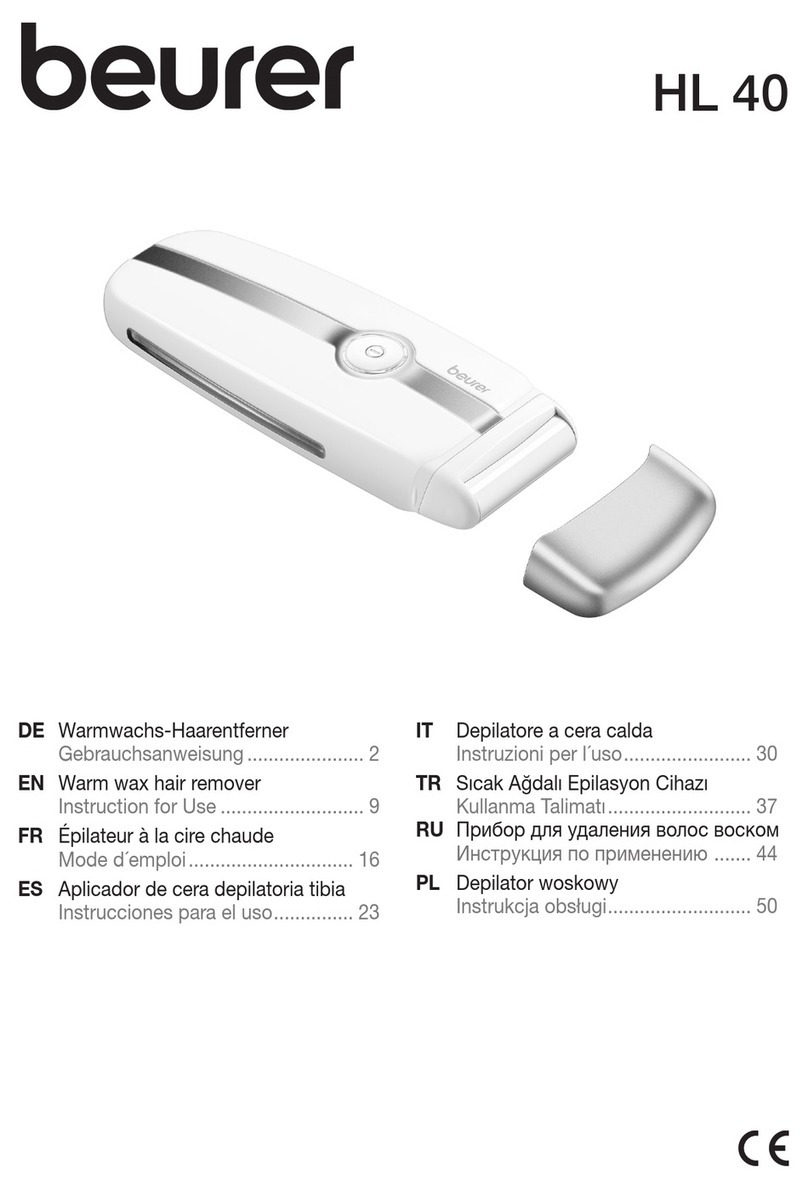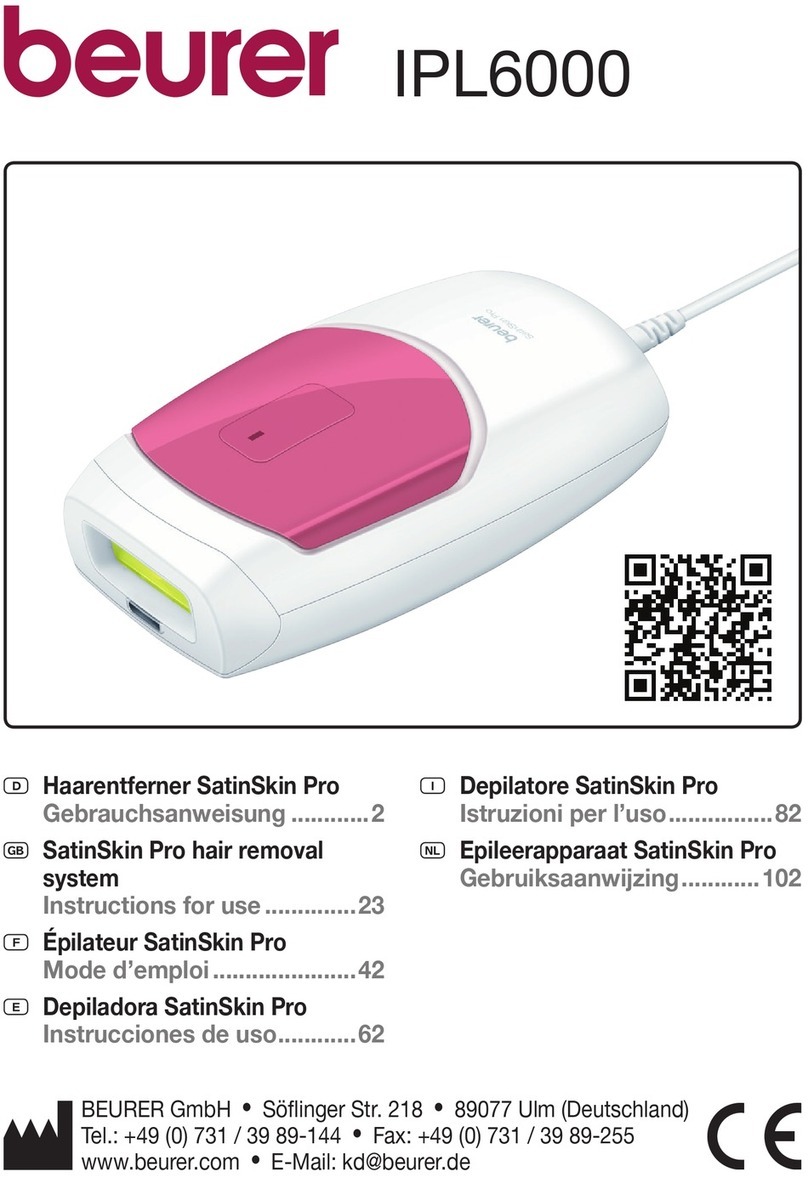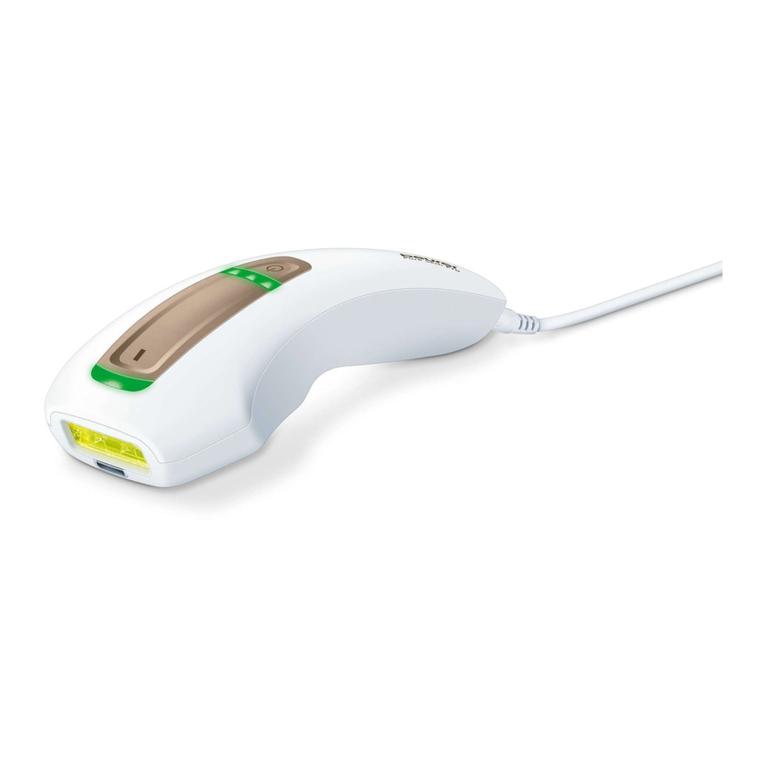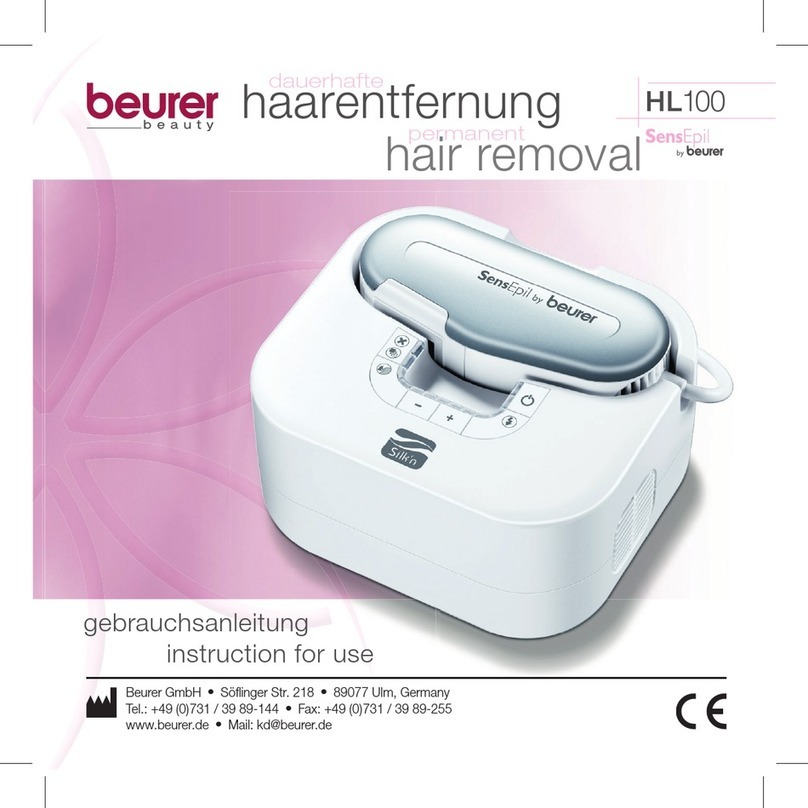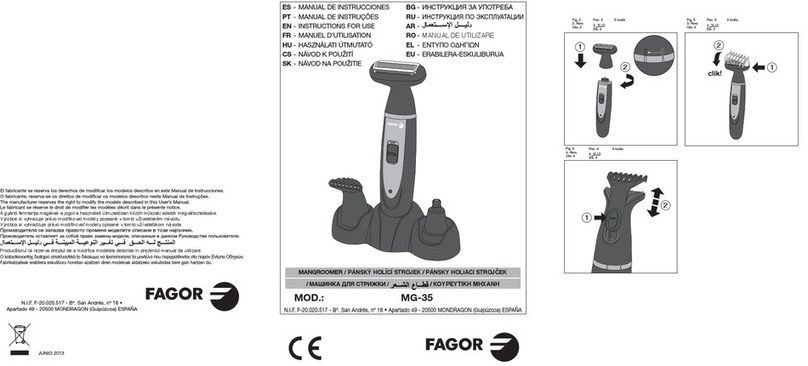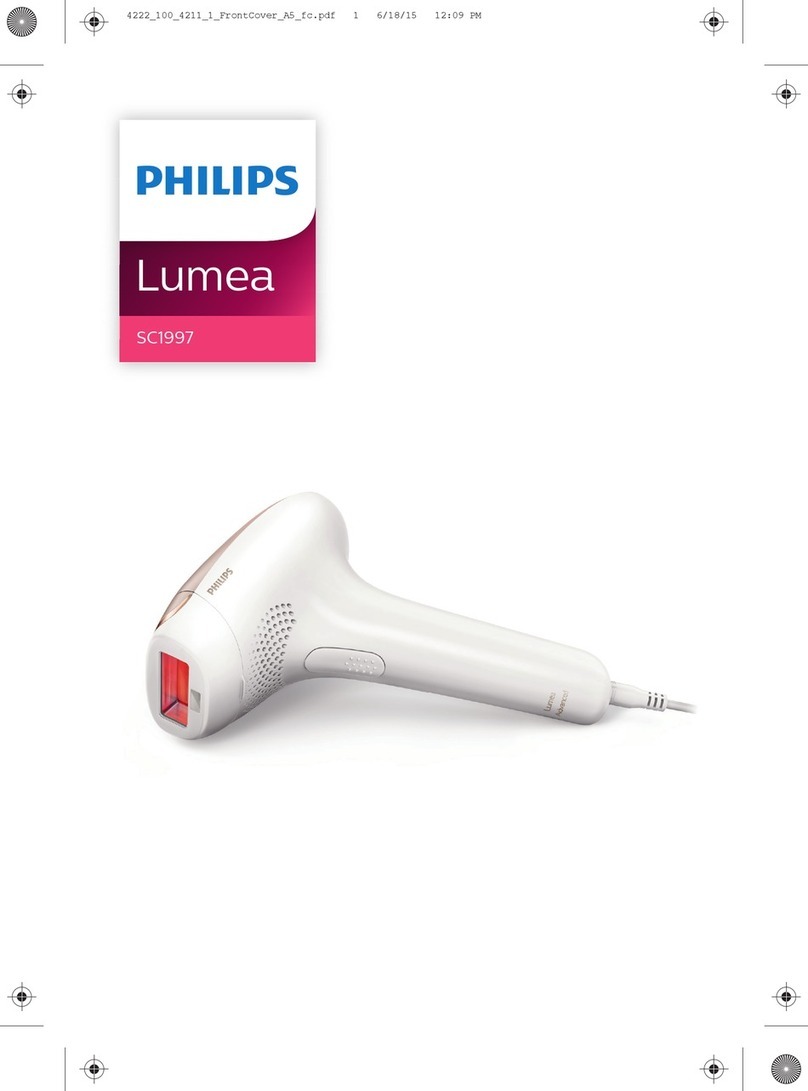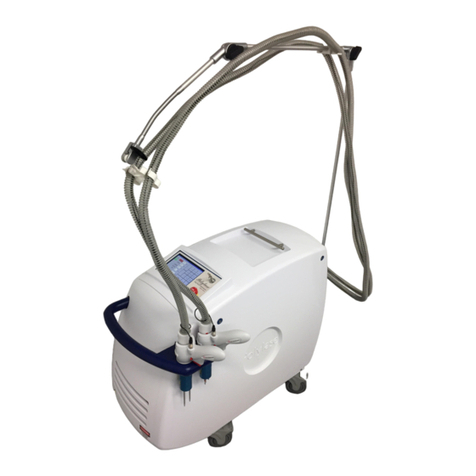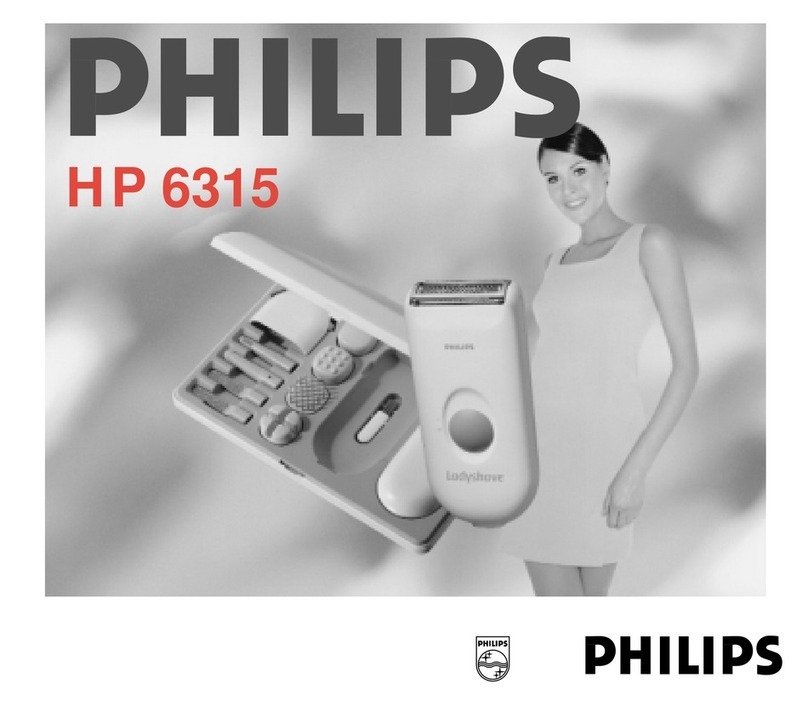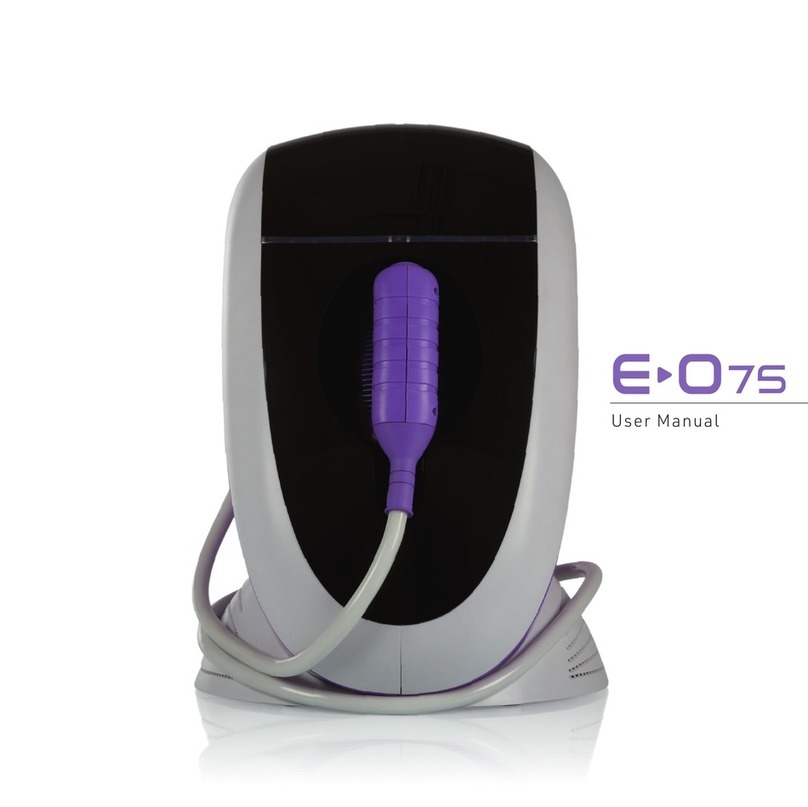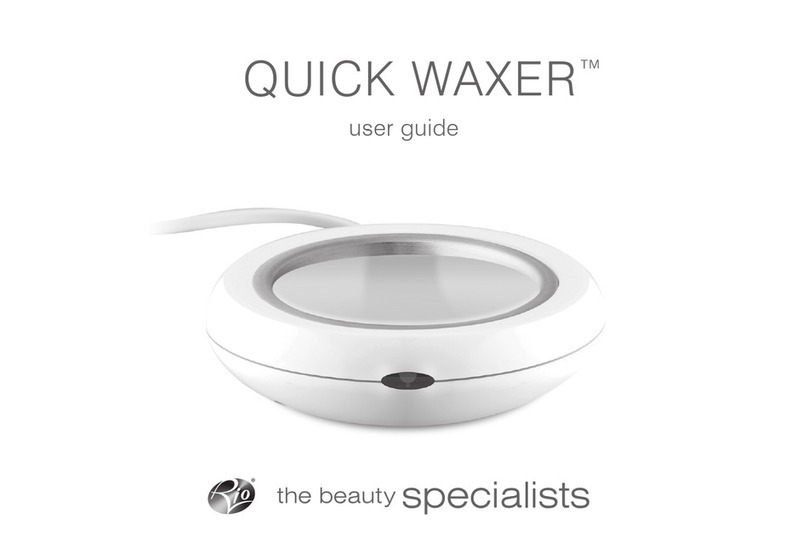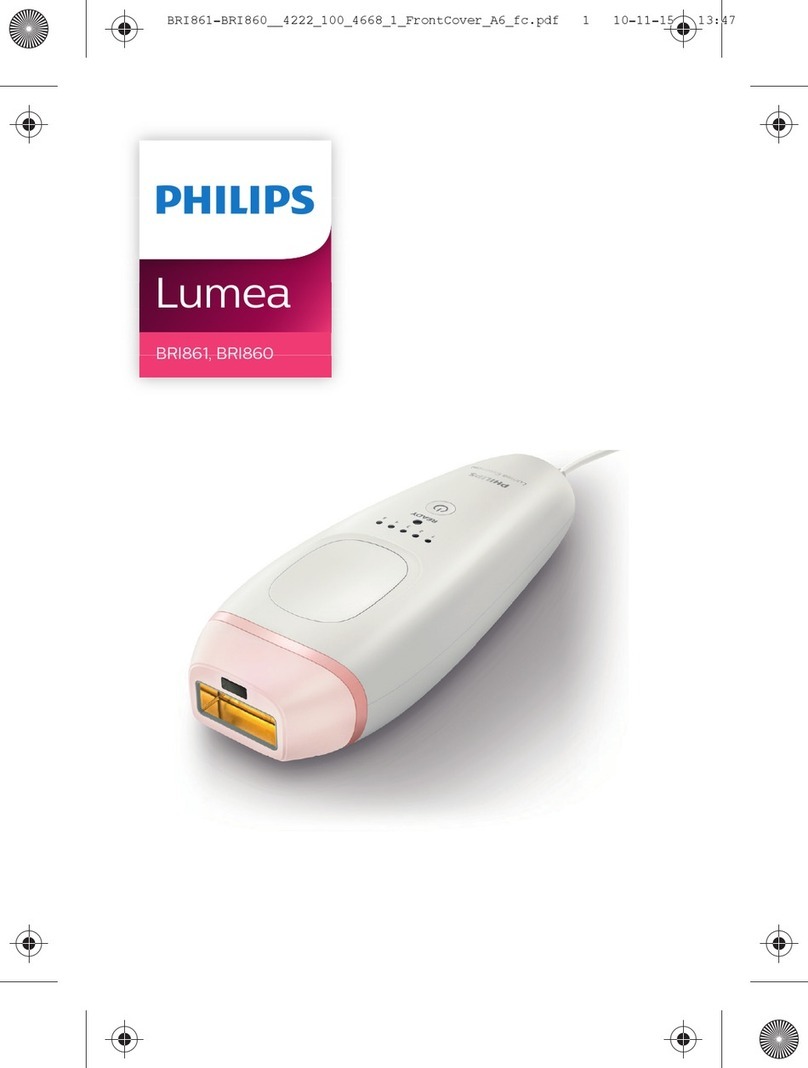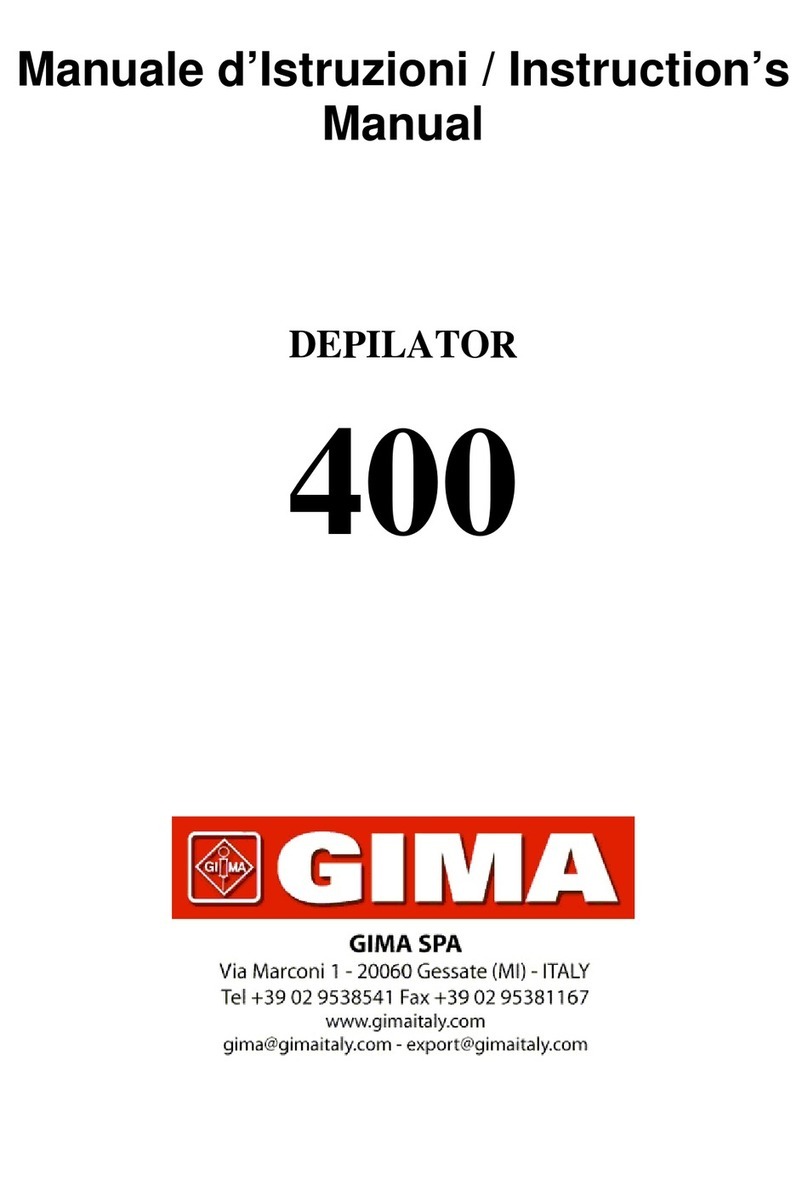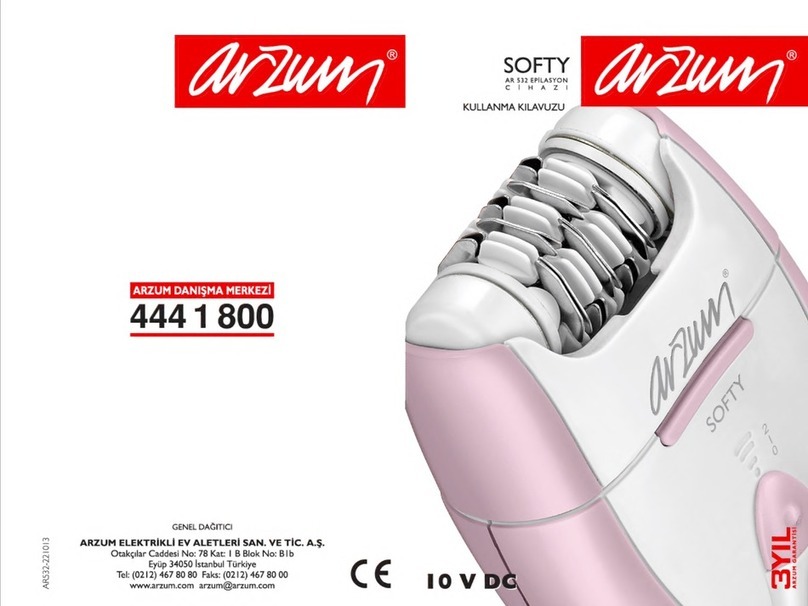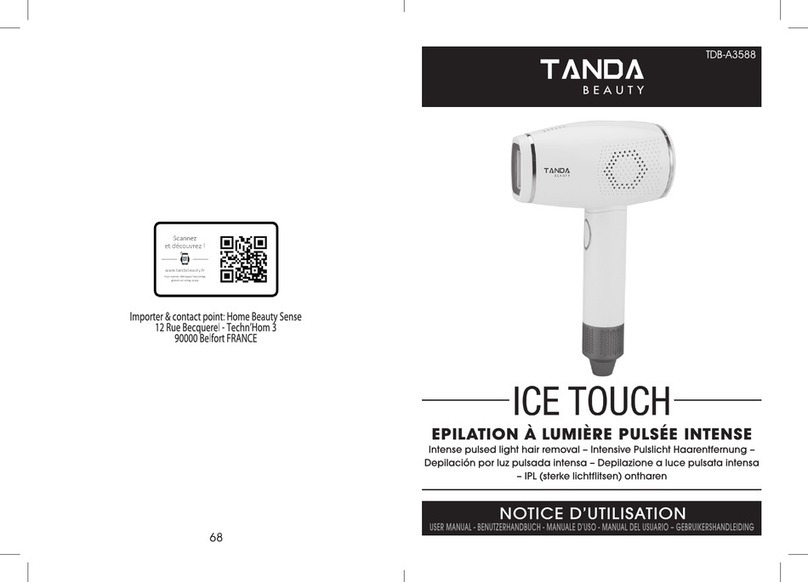
6
GB
WARNINGS
DO NOT USE the Tria Laser Precision on
or around the eyes, eyebrows, or eyelashes.
Doing so can cause permanent eye injury.
DO NOT USE the Tria Laser Precision
if the Skin Tone Chart shows that your skin
tone is not suitable. If you have African,
Indian, Native American or Pacific Island
heritage, you may have a skin tone that is
not suitable—be sure to check the Skin Tone
Chart. Darker skin tones can absorb too
much laser light, which can injure the skin.
DO NOT USE the Tria Laser Precision
anywhere on the ears, nipples, genitals or
around the anus. These areas may have more
sensitive skin, a darker skin tone, and/or a
greater hair density, and using the Tria Laser
Precision there may cause serious skin injury.
DO NOT USE the Tria Laser Precision on
parts of your skin that are darker than your
usual skin tone: tattoos, dark brown or black
spots (such as large freckles, birthmarks or
moles), or skin that is red or swollen from a
previous treatment. Dark skin may absorb too
much laser light, which can injure the skin.
DO NOT USE the Tria Laser Precision on
a man’s face, jaw or neck. The hair in a man’s
beard area is too dense, and using the Tria
Laser Precision in these areas may result in
skin injury.
Hair removal by laser can cause
increased hair growth in some individuals.
Based upon currently available data, the
highest risk groups for this response are
females of Mediterranean, Middle Eastern
and South Asian heritage treated on the face
and neck.
DO NOT USE the Tria Laser Precision on
damaged skin, including open wounds, cold
sores, sunburns or areas where you have
had a skin peel or other skin resurfacing
procedure within the last 6–8 weeks (check
with your doctor). These conditions can
make the skin more susceptible to injury.
DO NOT USE the Tria Laser Precision
if you are pregnant or breast-feeding. The
Tria Laser Precision has not been tested
on pregnant women. Hormonal changes
could increase skin sensitivity and the risk
of skin injury.
